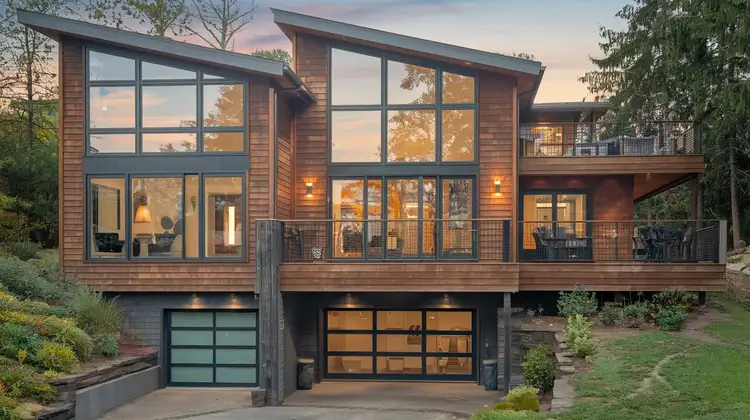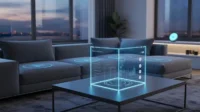Best Tiny Home Designs Stylish Compact Functional Living Solutions
Published: 24 Jan 2025
Introduction
Let’s be honest, over recent years large houses have been termed old-fashioned and the new trend is to go for tiny house designs. A smaller house certainly comes with more comfort and in some cases even style. Such homes can be a perfect fit if affordability is an aspect you are considering or sustainability is a focus. With tiny households you can achieve the exact balance between function and style.
This piece is made to highlight the fact that small space dampens the need for style, but the concept of tiny homes disproves that. There’s more to them and as we detail design elements for tiny houses we will also discuss other questions about the relevance of this growing new concept.
Why are Tiny Homes Aesthetic?
Tiny homes are the perfect blend of modern and vintage as their concept and construction have been framed from what millennials love. These homes give the occupant a stylish and comfy feeling due to their high efficiency philosophy, which is the best thing for modern artists due to their vision for larger spaces.
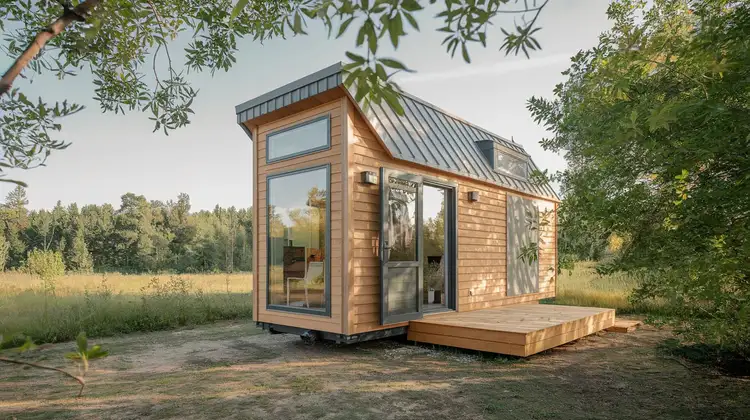
Modern Aesthetic Tiny Homes
For tiny homes to be classy, they need a little bit of contemporary construction and fine polish. Pets or something personal can be added to give the space a unique vibe. These modernised mini homes utilise high standards for construction materials such as wood, steel and glass. Large windows, open spaces and strategically located lighting create the illusion that the room is much vaster than it actually is.
Practical Tiny Homes
The practicality of a tiny home strategy is its biggest appeal. They serve exactly as a conventional home but on a smaller scale. An elegant and stylish retainer table is one of the multi-functional pieces for tiny fandom furniture. Also compact daily items including available sofa beds and pull-down beds. The time saved around the house is the biggest asset of such storage and organisational gadgets, such as built-in shelves, loft spaces and concealed compartments.
Tiny Home Design Styles
Tiny homes offer varying designs which will suit the user both aesthetically and functionally. An individual can easily find a suitable design in case they are inclined towards sleek modern designs, happen to love a more rustic appeal or prefer to stay in a very warm and cosy cabin. The most common styles include:
Modern Tiny Home Design:
- Emphasis is more towards functionality when it comes to modern tiny home designs, which is why these are often characterised by simple outlines, spacious courtyards and advanced interiors.
- To describe them more closely, modern tiny homes are also quite energy efficient, as they utilise eco-friendly building and design materials their soft furnishings are also equally pleasing which emphasises comfort by being stylishly designed and neutral in shades.
- Mongolian ger can be considered a synonymous term with modern tiny houses, as not only do they have numerous windows and glass walls, but their purpose is also to amalgamate nature with the interior build.
Rustic And Vintage Designing Style:
If you’re after something more comforting, then rustic vintage tiny homes are the best option for you as they are accompanied by timeless charm. These homes can be built with wooden cladding and steel siding may also be used alongside log cabins, which give off an amiable vibe. Patios along with stone fireplaces and customised furniture made with repurposed materials can also be incorporated into the space. One of the many pros and importance of the design is that the centre is purposefully hidden, allowing the modern house to seem more calm and elegant.
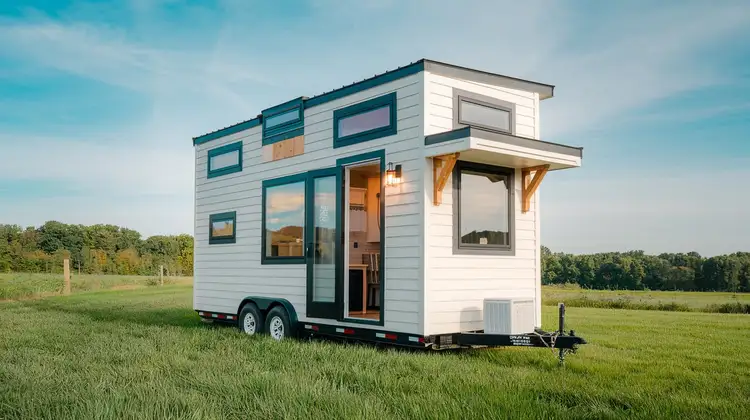
Minimalist Tiny Homes
Minimalism is one of the central tenets of many tiny home designs. In a minimalist tiny house, all non-essential items, items that contribute to clutter and distractions are stripped out. Such homes are suitable for people who prefer a simple and sustainable lifestyle. The furniture is generally simple and utilitarian in nature and the overall decor is designed in neutral colours in order to foster a serene and decongested atmosphere.
How Tiny Home Design Maximises Space
Tiny homes have also become popular as they provide the opportunity for owners to maximise the space available to live in. In spite of their compact proportions, thanks to smart planning and efficient techniques, tiny houses can be made to feel just as big as more conventional homes. Some of the design techniques that are used to maximise space in a tiny home include the following:
Multi-Functional Furniture
Tiny home furniture needs to be multi-functional. Converting furniture like a bed that has a sofa, a dining table that folds into the wall are some furniture that is best suited for those who want to live in a tiny home. With desks that retract into walls, shelves in the walls and ottomans that sit above storage, it also saves a lot of space and keeps the insides neat and organised.
Smart Storage Solutions
For instance, it becomes indispensable to ensure Building Codes and Zoning Regulations are met. Opting for a building code and permit, zoning regulations become vital in listing, more so on the ownership of tiny homes. It is imperative to comply with Government Restrictions, otherwise lack of permissions renders building drones like structures.
Design Feature | Description | Key Benefits |
Lofted Sleeping Area | Elevated sleeping space above living areas. | Saves floor space for other essential functions. |
Multi-Functional Furniture | Furniture that doubles as storage, like sofa beds or tables with drawers. | Maximizes functionality in limited space. |
Foldable & Hidden Elements | Fold-down desks, Murphy beds or pull-out kitchens. | Provides flexibility and keeps the space tidy.
|
Open-Plan Layouts
There exists housing cooperatives and homeowners associations, whose regulations and interactions with buildings, structures or places of business are indispensable. Not to forget, placement of seating areas becomes at a premium in open settings that accommodate multiple functions and encourage the use of better tools.
Constructing Your Tiny Home
Constructing a tiny home requires process-oriented thinking, imbued with a good sense of design and strategy as well as planning for the costs involved. The budget as stated earlier can significantly vary depending on the extent of purchasing already designed tiny homes or being hands-on with the materials and constructing the home yourself as well as the overall complexity of its design. While the use of a DIY rule in tiny homes may result in a rough price compared to stick-built homes, the actual cost does vary depending on the area of purchase and its specifications.
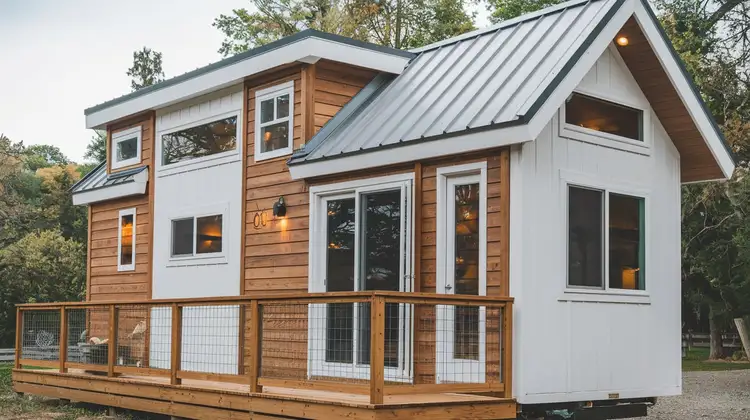
Designs and Picking Materials
Singling out the right materials for your minimalistic home development assumes a pivotal part in deciding the strength of the home and its energy productivity. The utilization of eco-accommodating materials like reused wood, bamboo and protected boards can effectively diminish the carbon impression of the house while making it agreeable no matter what the season or season. Solid and premium items, for example, metal rooftops and protected covered windows are said to reduce down the expense of support over the long haul.
Budgeting for Your Tiny Home
When determining the budget for a tiny house, there are many things that have to be taken into consideration including location/cost of land, other specifics and complexity of the design. Tiny homes’ costs can extend above and below the given range of £30,000 to £100,000 with an average between £40,000 to £80,000. The aforementioned amount can also drop to £15,000-£25,000 if instead of getting it professionally built, you choose to use reclaimed materials and do most of the work yourself.
Tiny Homes Floor Plans
After getting an idea of a rough budget, the next step is to decide on a layout and create custom blueprints to ensure your tiny home is as functional and comfortable as possible. Different variations are offered when it comes to designing tiny homes, offering multi-room houses and lofts with different floor designs to choose from.
One-Bedroom Floor Plans
Couples looking for efficiency or individuals seeking to live a minimalistic life will prefer one-room tiny homes as they are simple yet effective. Most designs follow an open plan strategy allowing for a singular living area that encompasses the kitchen, living space and a bathroom. The inclusion of lofted beds inside one-room tiny homes is quite common as it allows you to save on space in the room itself.
Multimodal Tiny House Design with Multiple Rooms
Layouts of multi-room tiny homes often come with separate small offices, sleeping quarters, dressing Thoughts on Designs and Picking Materialsspaces, living rooms, guest spaces and room for additional tools in case more storage is needed. However, my favourite addition has to be lofts. Not only do they offer a comfy sleeping spot, but they also do not take up much space. For those who prefer a separate sleeping area, lofts are a great option.
Construction Design Of Tiny Houses
To further elaborate, green roofs, solar panels, rainwater collection systems and composting toilets have all become common fixtures of sustainable tiny residences. Aside from the basic fact that a tiny house uses fewer materials than a conventional home, tiny house living works to lessen a person’s negative impact on the environment. Instead of incorporating unnecessary systems, appliances and materials, many builders of tiny homes work with eco-friendly resources.

Functional Designs of Tiny Home Interior
It is a challenge for any designer to combine all three aspects of design: comfort and practicality. Therefore, we compiled a small list of tips on how to arrange functional yet comfortable tiny home interior design.
Light and Neutral Decor
Applying neutral tones to the walls, floors and furniture can help create an illusion of bigger space. For instance, pale grey, beige and white can contribute to expanding a room’s feel. Moreover, gentle shades have the ability to increase the light available in a room since they are better at reflecting light.
Utilise Vertical and Wall Space
Since minimalistic houses for the most part need sufficient floor region, exploiting vertical space is significant. Utilize high racking, wall snares and hanging stockpiling crates to keep your possessions coordinated without consuming significant floor space. Also, you might involve lofts for resting or putting away things that you don’t have to everyday use.
Personal Touches in Decor
Add personal touches in decor and furnishings to give your tiny home the sense of a familiar place. This can include anything from custom furniture to family heirlooms to handcrafted artworks. The idea is to design an environment that looks like it belongs to you while being functional.
Tiny Houses and the Benefit of Having Less
In the event that the house is more modest, one can stay away from many problems. At this point, a many individuals are changing to minimalistic living spaces since they can set aside a great deal of cash by putting it into different things, while invalidating the development and support costs. Besides the fact that this turns out to be monetarily worthwhile, however it permits a person to live in a more modest climate, liberating them from pointless interruptions.
FAQs
What are the reasons for having a tiny home?
Building a tiny home would save a significant amount of money and resources while giving you the freedom to minimalist your lifestyle entirely.
What is the average cost of building a tiny home?
Considering the size, design and the customisation options, the average cost lies between 15,000 to 100,000 dollars.
Are tiny homes energy efficient?
Yes, considering their size, they can more often than not be eco-friendly and energy efficient, since there are solar panels, efficient appliances and other green materials used.
How do you go about designing a tiny home to maximise space?
To maximise the space in a tiny house, open plans should be used along with multi-functional furniture. Adding shelves and lofts would also be beneficial.
How do you decide on a particular tiny home design style?
Choosing the best tiny home design style is a personal choice. Some of the tiny home design styles deserving mention are modern style, rustic and minimalist. Each of them allows stylish functional living spaces.

- Be Respectful
- Stay Relevant
- Stay Positive
- True Feedback
- Encourage Discussion
- Avoid Spamming
- No Fake News
- Don't Copy-Paste
- No Personal Attacks

- Be Respectful
- Stay Relevant
- Stay Positive
- True Feedback
- Encourage Discussion
- Avoid Spamming
- No Fake News
- Don't Copy-Paste
- No Personal Attacks

